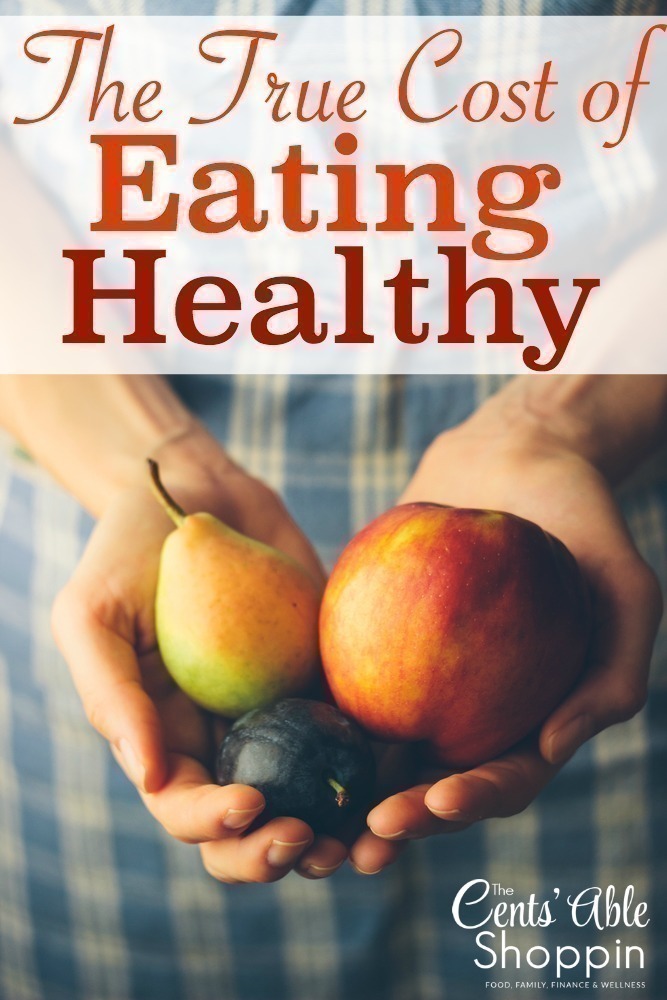
It’s a very common misconception that junk food (or, processed food) is cheaper than eating healthy.
But if you look at the majority of Americans, you will notice that many are overweight, with diabetes, on lots of medication, or perhaps their children are always sick – just because eating what’s convenient and appears less in cost is often times perceived to be less expensive than their more healthy, alternative options.
It’s a given, that money does not guide decisions about what to eat – what also plays a huge factor is convenience, and accessibility – it might also be presence, and the addictiveness of processed food.
Think about it…. people are conditioned to go to the grocery store weekly – if not several times a week. While there, upwards of 75% of the items are processed…. including your Soy & Almond Milk (yes – processed), kids cereal, yogurt, regular milk, even the eggs and meat can be grouped into that category. Suggest not shopping at the grocery store and you will get some blank stares – HOW in the world is that an option? Surely it’s out of the price range of affordability for most – but is it really?
Junk Food is Perceived to be Cheap
But is it really the best option?
Realize that many families right now juggle a crazy schedule with kids – obligations, work/jobs, life… and in a hurry when you have to get somewhere, the value menu at McDonalds OR Jack in the Box might seem like a really amazing option. After all, where can you feed 4 kids + yourselves for less than $12?
Much of this has to do with our Federal Government – as they subsidize that type of food. The U.S. Food subsidies are VERY skewed – they push factory farmed meat, milk and foods that are high in sugar and grain, then we wonder why (as a country) our health is getting worse and not better.
Believe it or not, $10 or $12 to feed a family of 6 is very doable – in fact, you could feed your family 1-2 meals for that and still come out ahead.
Why are People Drawn to Poor Food Choices?
It’s easy to find poor choices in almost every area of the grocery store – manufacturers put out coupons largely for items that are loaded with sugar, high fructose corn syrup, soy byproducts, and GMO grains – after all, corn syrup is a cheap sweetener and GMO grains are abundant.
If you stop shopping at the grocery store, over time you will look back and realize how expensive it really is – $1.50 – $2 for chips (that hold NO value for you at all), $1 for a box of cereal that is mostly sugar, and $.50 – $1 for a cup of yogurt that has no real benefit to your body other than it’s highly processed and marketed to look like an inexpensive, healthy option.
These foods can quickly eat up your budget and leave you with nothing that is an asset to your health. Manufacturers have pulled the covers over your eyes to make it appear that these foods are incredibly nutritious, healthy options for your family through heavy marketing and coupon campaigns – after all, saving money is the goal – right?
Forget the true cost of that savings {your health}.
Eating Healthy on a Limited Budget
We mentioned some great pantry staples that are great to have in your pantry – and while those are a great place to start, eliminating your local grocery store is also a great move, too. You should be focusing your efforts on 80-90% whole {real} foods and 10-20% other ~ right now though it seems as if those numbers are reversed.
Related post: The Reality of Real Food with Schedules, Families, and Commitments…
So how do you feed your family real food when you are on a limited budget and have the perception that healthy food costs more (when it really doesn’t?)
1. Make things Yourself. Become resourceful in your own way. Learn how to get back to the kitchen and make your own food. Yes, cooking yourself takes time, believe it or not, it isn’t as time consuming as most think it is. Make your own Broth, Breads and learn ways to use your vegetable and fruit purchases without letting food go to waste. Invest in appliances that can help you do that faster (Instant Pot is a great one). Learn how to freeze, and use up leftovers.
2. Invest in Local Food. Eliminate your grocery trips and purchase your produce locally (CSA or Farmer’s Market). Arizona also affords some the opportunity to get $30 in farmers market cash to spend on local, organic produce. Many CSA’s (like Taste of Paradise in Phoenix) afford you the opportunity to pay each week instead of up front, and pick up at a location convenient to you.
Local produce is healthier, organic and pesticide free, and a great basis for you to plan your weekly meals (see the next suggestion!)
3. Plan your Meals. This is incredibly important – and can be done quite easily based on the bag you capture weekly from your CSA. Rely on the produce from that bag, along with your pantry staples and you have an abundance of dinner options that are healthy and you haven’t had to run to the grocery store for food.
If you can, it’s always great to make extra, and save for a second meal or leftovers, which you can take to work or have for another meal.
4. Avoid Wasting Food. Find ways to use up your produce – Squash is great in bread, an abundance of carrots are great when pickled or used in soup. And an overabundance of ANY vegetable is a great way to make a frittata with some eggs. Use your freezer to your advantage, too. You might find that when you stop shopping at the grocery store, you aren’t as prone to have excess “things” in your pantry that end up going to waste – – you essentially save money on food and prevent waste at the same time.
5. Find Places you can Stock Up in Bulk. For the pantry staples you can’t get at your CSA, find ways to stock up on bulk items without having to depend on the grocery store. Amazon is a great way to pick up Organic Cornmeal and Steel Cut Oats, Cacao Powder, and more. Vitacost is a wonderful place to stock up on flour, lentils, molasses, turmeric powder, and baking needs – they have Organic and Non-GMO products, ship quickly and offer discount coupons with each order.
Lastly, Costco is a wonderful {Local} way of picking up bulk organic items too – items you might not want to order online – like Rice, Organic Pasta & Sauce… Chia Seeds, and Organic Peanut Butter. Make a trip once a month to replenish staples.
Had someone told me 8 years ago I could survive without the regular grocery store I would have rolled my eyes and thought they were crazy…believe it or not, it really isn’t a good place to get food.
The best foods to invest your money in are those that are local (CSA produce and Farmers Market, Meat and Eggs) & Organic – but it’s also important to know why you are buying those items, too:
Animal products like meat, butter, eggs that are incredibly important to buy organic because animal products concentrate pesticides in higher amounts.
Find a local farmer to buy your grass fed, pastured beef – it’s often times less expensive than buying the meat in store, which is largely the byproduct of a confined animal feeding operation and loaded with antibiotics and hormones.
Find a local farmer in your area for Raw Milk – not only is it great for those who are lactose intolerant (it’s because it’s NOT processed) it’s loaded with vitamins that are not found in regular processed grocery store milk. One common misconception is that dairy is bad – while processed dairy IS bad, raw milk is entirely the opposite – a very alkaline (not acidic) food that will do wonders for boosting your immune system, helping with eczema and even allergies.
Since local can’t help you with pantry staples, take advantage of buying your pantry staples in bulk at a warehouse or buyers co-op.
Why Buy Local?
There are 8 reasons.
Not only do you help support a local farmer who has the mindset of health in the food they are growing, you are not risking your family to the toxic products sitting on store shelves.
That cheap meat that is advertised in supermarket ads is nothing but meat that comes from a large CAFO … essentially an animal factory, where animals are crammed in small spaces, given hormones and antibiotics to make them grow larger, faster, and in operations that operate largely for profit over health of the animal. You can read more about CAFO’s by heading HERE and why they are something to avoid.
Your efforts will lead to better health of not just you, but your family – you might realize that eating healthy is not really as expensive as society perceives it to be. Unfortunately we live in a country where the health implications of our actions are not usually considered until it’s too late ~ even then, many look for a quick fix instead of a change to their habits.
You really DO have to be sick and tired to prioritize your life and improve your health. It’s certainly not a change you make overnight – and it isn’t something that is effortless and easy. It has to be something you want to do – and you have to know why you are making those changes.



